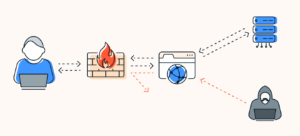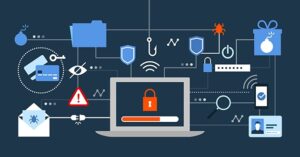In the vast landscape of personal finance, one fortress stands as the ultimate defense against the unpredictable storms of life: The Unshakable Emergency Fund. This isn’t just another savings account; it’s a non-negotiable financial lifeline, a cushion that absorbs the shocks of unexpected crises—from a sudden job loss or a major medical expense to an emergency home or car repair. Without it, the unexpected can force you into high-interest debt, derail long-term savings goals, or, most importantly, cause immense stress.
Building this fund is one of the most vital steps toward true financial security and freedom. It grants you the power to face adversity with confidence, allowing you to focus on recovery rather than scrambling for cash.
The True Cost of ‘Wing It’ Finance
Many people operate without a dedicated emergency fund, often relying on credit cards or loans when a crisis hits. This “wing it” approach comes with a high price tag.
- The Debt Spiral: Credit cards and personal loans carry high interest rates. An unexpected $5,000 expense can quickly swell to much more, trapping you in a cycle of debt repayment that can take years to escape.
- Derailed Dreams: Money earmarked for retirement, a down payment on a house, or a child’s education is often the first casualty. Dipping into these long-term investments not only delays your goals but can also trigger penalties or taxes, effectively punishing you for your emergency.
- Mental Stress: Financial distress is a leading cause of stress and anxiety. Knowing your family is protected by a substantial financial barrier is invaluable for your mental and emotional well-being.
The emergency fund is, in essence, an insurance policy with a 100% payout—it’s your own money, ready and waiting for the moment you need it most, without the crushing burden of interest payments.
Defining Your Unshakable Goal
Before you start saving, you need a target. The general rule of thumb for an emergency fund is to save enough to cover three to six months of essential living expenses. However, the right number for you depends heavily on your unique situation:
| Your Situation | Recommended Fund Size | Why This Amount? |
| Stable Income/Dual-Income | 3 Months of Expenses | Lower risk of a total income loss; recovery time may be shorter. |
| Single Income/Dependents | 6 Months of Expenses | Higher financial responsibility and greater risk if primary income is lost. |
| Self-Employed/Commission | 9-12 Months of Expenses | Income can be highly volatile and finding new business/work can take longer. |
How to Calculate Your Target
Start by creating a highly detailed monthly budget. Focus on essential expenses, which include:
- Housing (Rent/Mortgage)
- Utilities (Electric, Water, Gas)
- Food (Groceries, not dining out)
- Minimum Debt Payments (Car, Student Loans)
- Insurance (Health, Auto, Home)
- Transportation (Gas, Public Transit)
Calculate this total monthly essential expense number and multiply it by your chosen time frame (e.g., 6 months). That number is your goal. For many, that figure can be intimidating, which leads to the crucial first step.
The Path to Building Your Fortress
Building a significant fund takes time, but by breaking the process down, you make it manageable and inevitable.
Step 1: The $1,000 Starter Fund
The very first, most critical step is saving a mini-emergency fund of $500 to $1,000. This smaller, achievable goal immediately protects you from most spending shocks—those smaller, sudden expenses like a flat tire, a deductible for a minor medical visit, or a broken appliance. This initial success will give you the momentum and confidence to tackle the larger goal.
Step 2: Automate and Prioritize
The single most effective strategy for building your fund is automation. Treat your savings contribution like any other non-negotiable bill (rent, utilities) and pay yourself first.
- Set up automatic transfers from your checking account to your dedicated emergency fund account to occur immediately after every payday. Even if it’s just $50, consistency is key.
- Prioritize the fund over extra debt payments (except high-interest credit cards) and non-essential spending until your goal is reached.
Step 3: Slash Non-Essentials
Take a hard look at your discretionary spending. Every dollar you cut is a dollar you can redirect.
- Review Subscriptions: Cancel any unused streaming services, gym memberships, or mobile apps.
- Reduce Dining Out: Even small savings on coffee or lunch add up significantly over months.
- Utilize Windfalls: Direct any unexpected money (tax refunds, work bonuses, small inheritance) straight into your emergency fund.
Step 4: Choose the Right Location
The money in your emergency fund has two critical requirements: Safety and Liquidity.
- Safety: It must be held in an account that cannot lose value. NEVER invest your emergency fund in the stock market or volatile assets.
- Liquidity: You must be able to access the money quickly and easily, typically within 24 to 48 hours, without penalty.
The best places to store this cash are:
- High-Yield Savings Accounts (HYSAs): These are federally insured and offer a much higher interest rate than a traditional savings account, helping your money grow safely while maintaining instant liquidity.
- Money Market Accounts: Similar to HYSAs, offering competitive rates and easy access.
Key Rule: Keep your emergency fund in a separate bank from your checking account. This makes it psychologically harder to dip into for non-emergencies and reinforces its specific, critical purpose.
When to Tap the Unshakable Fund (And When Not To)
The single greatest mistake people make is using their emergency fund for something that is not a true emergency. To maintain its integrity, define clear boundaries.
Use Your Fund For:
- Job Loss/Income Reduction: Covering living expenses while you seek new employment.
- Major Medical Crisis: Covering deductibles, co-pays, or unexpected medical bills.
- Major Home Repairs: A burst pipe, a leaking roof, or a failed furnace—things that make your home uninhabitable or cause further damage.
- Essential Car Repairs: A breakdown that prevents you from getting to work.
DO NOT Use Your Fund For:
- A Down Payment: This is a planned savings goal, not an emergency.
- A Vacation or New Gadget: These are wants, not needs.
- Holiday Shopping: These expenses are predictable and should be budgeted for.
- A Great “Investment Opportunity”: This is risking your safety net.
If you are forced to use the fund, the single most important action is to immediately prioritize replenishing it. Your financial protection should always be at 100%.
The Unshakable Emergency Fund is more than a number in an account; it is a declaration of your financial resilience. It’s the peace of mind that allows you to weather any storm without compromising your future. Start small, stay consistent, and build your fortress today.



